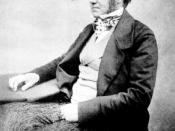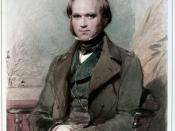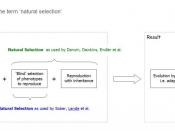1. Types of selection: Artificial vs. natural Modes of selection2. Examples of selection: Evolution by pollution Evolution in agricultureAdaptive significance of heterostyly1. Although natural selection is the dominant force shaping the course of evolution, it is a complicated process and a difficult one to quantify. Most of the phenotypic characters we associate with a particular species and use in their classification, e.g. body coloration in insects, flower architecture, spore sizes and shapes in fungi, etc., are thought to be the end result of natural selection. In other words these phenotypic variations were adaptive in a particular population and, therefore, increased in frequency until they became the characteristic condition in a species.
In its simplest form, natural selection can be defined as the differential survival and reproduction of genotypes in response to factors in the environment. It can only occur when genotypes differ in fitness. Fitness is measured by a genotype's rate of increase relative to other genotypes in a population.
Artificial selection, undertaken by animal and plant breeders, has commonly been used as a model for the action of natural selection. However, there is an important difference between the two processes. Natural selection has no purpose. For any given generation it results because of differences between individuals with respect to their capacity to produce progeny.
Natural selection is a self-generated outcome of interactions between organisms and their environment. In contrast, artificial selection is a purposeful process. It has a goal that can be visualized (e.g. increase in yield) and a selector - humans. Both processes, do, however, depend on heritable genetic variation.
Natural selection is not restricted to wild animal and plant communities and some of the best examples actually come from artificial environments in which humans have played an unconscious role in selecting certain kinds of characters over others.


